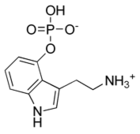Eschweiler-Clarke does not work at all. Picted-Spengler would be the main-reaction.
Also Al/Hg does not work very well/ ~20% yields. Source: Tihkal
NaBH(CH3COO)3 or NaBH4/CH3COOH does also not work/leads to extremly low yields or needs special conditions, because it does reduce indole. Source:
Rhodium archive - several documents on triacetoxyborohydride and NabH4 in carboxylic acid media are mentioning reduction of indoles with it and some
derivates.There are some other reciepes on the in the internet, where this is used to make DMT from tryptamine and aq. Formaldehyde. I think it's pure
a fake. Triacetoxyborohydride is very sensitive to water and does reduce indole - no big chance to work under the mentioned conditions (RT, THF,
excess CH3COOH as solvent).
BH3*THF or NaBH4/H2SO4 or NaBH4/I2 does also not work. The indole gets also reduced very fast under normal conditions.
NaBH4/MeOH . Does work (!!!), but does reduce aldehydes faster than imines/enamines form. It has to be very cold and a large excess of NaBH4 and
aldehyde are neccessary. Does work better for diethylated than for dimethylated tryptamines Source: The Vespiary
H2+Pd/C. Does also work. But needs high pressure of H2. Does sometimes overdo it's job when the catalyst is too strong. Source: Tihkal
Sodium cyaboborohydride does work well but produces side products, esp. beta carbolines. Good workup necessary. Source: Rhodium archive/Vespiary
Untested but very interesting: Zinc borohydride, potassium borohydride and Zn/NaH2PO4
Zinc borohydride because it's known to perfom very well for dialkylations of amines, potassium borohydride because it less active and smoother than
NaBH4 and Zn/NaH2PO4 because it's known to alkylate amino acids and alkylamines in high yields. Zn/NaH2PO4 and formaldehyde does also work for
dialkylation of tryptophane.... but dimethyltryptophane is very hard to get ripped of CO2 and is extremely toxic. Try it yourself.
|














 (
( )
)










 , im not going to risk getting ass raped for 7 years
, im not going to risk getting ass raped for 7 years


